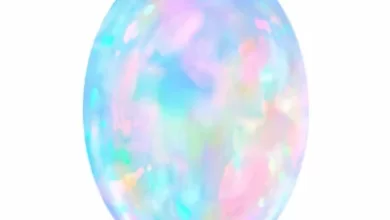How To Approach Teen Skin Care With Caution
Young, delicate skin has inherently different needs and doesn’t require the same sort of maintenance as its older counterparts—which means that if kids aren’t careful, they may end up doing long-term damage to their faces.
Understanding the rise of teen skin care
The hashtag #Teenageskincare has garnered over twenty-two billion views on TikTok, inundating viewers with countless product recommendations and revealing the power that teen and tween consumers hold across the beauty industry. Market research indicates that the use of social media marketing stands as one of the primary trends driving growth in the teenage personal care product market, which is projected to reach $8.81 billion by 2026.
This is largely because teens and young adults are highly susceptible to informational bias—meaning that they’re more likely to take the skin-care advice they receive from influencers (who are trying to sell products) as fact. “This susceptibility stems from a lack of basic knowledge about skin physiology and formulation chemistry, fueled by an unfiltered trust in the narratives of self-proclaimed experts on social media,” explains Cezary Skobowiat, Ph.D., DSc, DVM, chief psychodermatology science advisor at Selfmade, a psychodermatology-based skin-care brand.
The desire for teenagers to “banish imperfections” has always been there, but these days, it’s even more prevalent than it used to be. On social media, teens are inundated with images of filtered, flawless skin, which makes it feel like “perfection” is within reach with the help of whatever “miracle” product an influencer is trying to sell. The concern for experts, though, is that much of the skin care that’s glamorized on social media “is geared toward adult skin issues—like age-related decreased collagen production, signs of excessive UV exposure and pollution—and may not always be the best fit for younger, teenage skin,” says psychodermatologist Keira Barr, MD.
Why teens need to approach their skin routines with caution
The skin is an intelligent organ that knows what to do to balance and protect itself. When you start bombarding it with active ingredients, it can throw this natural function out of whack—which can create real problems in younger complexions.
“When this younger age group introduces too much, too soon, it can disrupt this natural cycle and can lead to burns on the skin or cause cell turnover to occur too quickly,” says Howard Lancer, MD, board-certified dermatologist and founder of Lancer Skincare. “This will then confuse the natural processes of the skin cycle, contributing to premature damage, peeling, redness, breakouts, irritation, and more.”
A normal tween barrier is made up of lipids that keep bad stuff out and good stuff in, providing a first line of defense against the environment. While young people’s skin barriers are fairly strong, they are also fairly thin, which makes them easier to compromise. Because of this, experts caution against adding harsh actives like AHAs, retinol, and vitamin C into their routines, as they can significantly irritate the skin barrier and cause increased sun sensitivity.
According to Evan Rieder, MD, a board-certified dermatologist and psychiatrist based in New York City, these ingredients can “worsen acne and eczema,” both of which are common in young people, and can strip away the natural ceramides within the layers of the skin, leaving the barrier in an even weaker state.
Only after a teen turns 20 should they graduate to adding more active ingredients to their routine, as that’s when cell turnover and collagen production slows down. “It becomes sensible and practical to begin incorporating high actives, which aid in helping the skin navigate these changes,” says Dr. Lancer. Until then, young people should stay away from overloading the skin with actives and anything labeled “anti-aging,” as the risks outweigh the benefits.
How to craft an effective teen skin-care routine
All of this is not to say teens shouldn’t be using skin care at all. Many teens deal with acne, increased oil production, and hyperpigmentation as they move through the hormonal shifts associated with puberty, and there are plenty of safe ingredients they can use to address these concerns that won’t harm their skin in the long term.
Pros recommend salicylic acid for dealing with acne (though Dr. Barr recommends starting with a low concentration and gradually increasing “to minimize side effects such as excessive dryness, irritation, and heightened sensitivity”), and niacinamide for balancing oil production and fading discoloration.
Beyond treating any pressing issues, a solid teen skin-care routine should “keep it simple and focus on supporting the skin barrier function and protecting the skin from environmental damage such as UV exposure and pollution,” says Dr. Barr. This means using a non-soap cleanser morning and night, applying an oil-free lotion followed by an SPF 30+ in the morning, and using a barrier-building moisturizer before bed.
With all of that in mind, understanding skin physiology and formulation chemistry is complex and poses a significant challenge for young people to make informed choices about proper skin care. Enter dermatologists, who can guide teens on proper routines and how to avoid bad habits that can compromise their skin barriers. “Trained professionals can help by cautioning against using products containing prohibited ingredients like hydroquinone, other bleaching agents, phthalates, strong peels, and harsh abrasive procedures,” explains Dr. Skobowiat.
By prioritizing these considerations, teens and tweens will be empowered to establish skin-care routines that not only address their immediate concerns, but also contribute to positive long-term skin health as they age.


